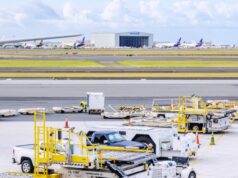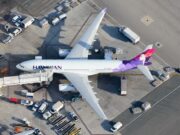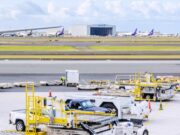
Does picketing even matter?
You have undoubtedly seen pictures and video footage of various pilot-picketing events around the country that have occurred since 2021. Every major airline-pilot group has picketed in various locations at events from coast to coast. The scene is usually the same with stoic looking pilots staring off into the horizon holding large signs and not reacting to any outside call or jeers from passersby or even other airline employees. The signs have many clever sayings and catch phrases all meant to sting, in some form or fashion, the leadership team at their respective airlines. No matter what the saying though, the point is usually clear – your pilots are discontent, they feel used, abandoned, unheard, and betrayed. And they are NOT happy about it.
With multiple picketing events occurring for each airline, the questions usually brought by an outsider to aviation, or a new pilot are, “Why do this? Does it even work?” The questions are valid as it does appear to those on the outside that picketing doesn’t move the needle and may, in some cases in fact, swing public opinion against the pilots. After all, pilots are making more money than the average person for seemingly more time off and a way cooler job. Also, fair points, but the target audience is not the general public, it’s the investors of the airline and its leadership. A picture, as they say, is worth a thousand words.
Let’s start with why airline pilots picket. For one thing, the Railway Labor Act (RLA) under which airlines fall, sets out very specific requirements for what labor groups are allowed to do to put pressure on a company that seems to be dragging its feet in contract negotiations. Other unions are allowed to “self-help” which is a term most commonly associated with striking. That method is often extremely effective because whatever demands the employees are making are likely far cheaper than the cost of closing the production line or business for days on end while the strike is in progress.
Other forms of self-help include work slowdowns, encouraging boycotts, and automatically implementing proposed contract changes. The RLA requires a lengthy process to get to the point where airline labor groups would be able to take those steps. So, the primary method to display frustration and displeasure is through picketing while displaying items that are still within the company guidelines such as pins and lanyards that reflect pilot displeasure. The latter, of course, are a bit harder to see if you are the traveling public or an investor with the airline.
But, when we picket, we are sending a very clear picture to leadership, investors, fellow employees, and the public that we are not happy. When negotiations stall, one tactic management tends to use to plant their feet on contract improvements is to tell the union negotiating team something to the effect of, “We don’t think your pilots want that,” or “We don’t think your pilots are really that mad,” or “None of your pilots are asking for all these gains.” The point is, they are telling the union that they are out of touch with the desires of the group they represent. This is where picketing steps in.
There is a famous negotiating story told in the book Getting to Yes, about a negotiating team that was tasked with renegotiating the contracts for work gloves for the company’s many factories. The first thing the team found out was that there were over 1,000 different types of gloves in use across the various factories, and many different versions were used across departments and even different shifts within the same department. Before they continued negotiations, they brought management into a room and dumped one pair of each type of glove on the table. The stack was so tall that management deliberated for only two minutes before conceding that a change needed to be made and one glove would be purchased for everyone. A similar story is also told from Delta’s recent negotiations with their management wherein a certain group of pilots was excluded from consideration during negotiations, and so the union team put every one of the 1800+ pilots’ names in a word cloud shaped to depict 1880 (or whatever the exact number was) and left it on a screen during negotiations. The tactic worked as management conceded the impact that picture had on them.
The point is, visuals are hard to ignore and explain away. You can’t tell your negotiating counterpart that pilots aren’t mad when they are picketing your airports and headquarters. You can’t lie to yourself that the pilots aren’t mad when you see the look of frustration and anger on their faces in person. You can’t lie to your investors that the pilots aren’t mad when they have signs explaining why they feel personally betrayed. And you can’t lie to the public that the airline is building and maintaining a healthy work environment in which they should feel safe and comfortable.
If a picture is worth a thousand words, then picketing is the visualization of War and Peace.
























































































































